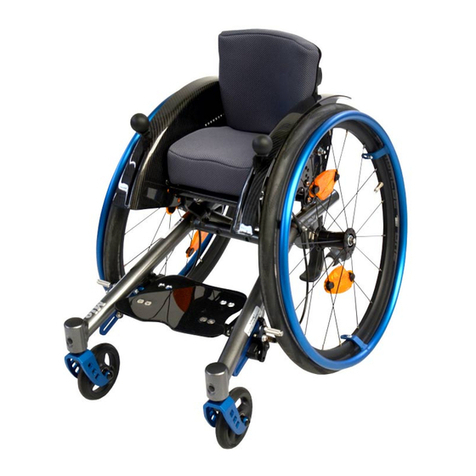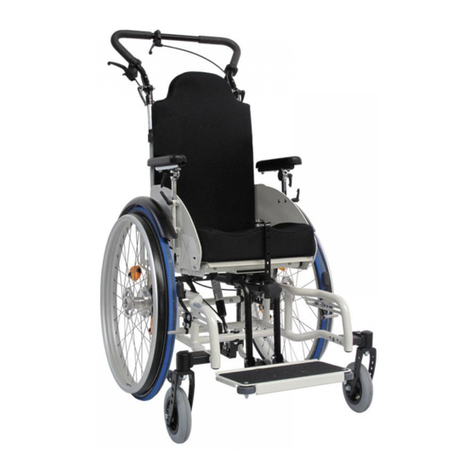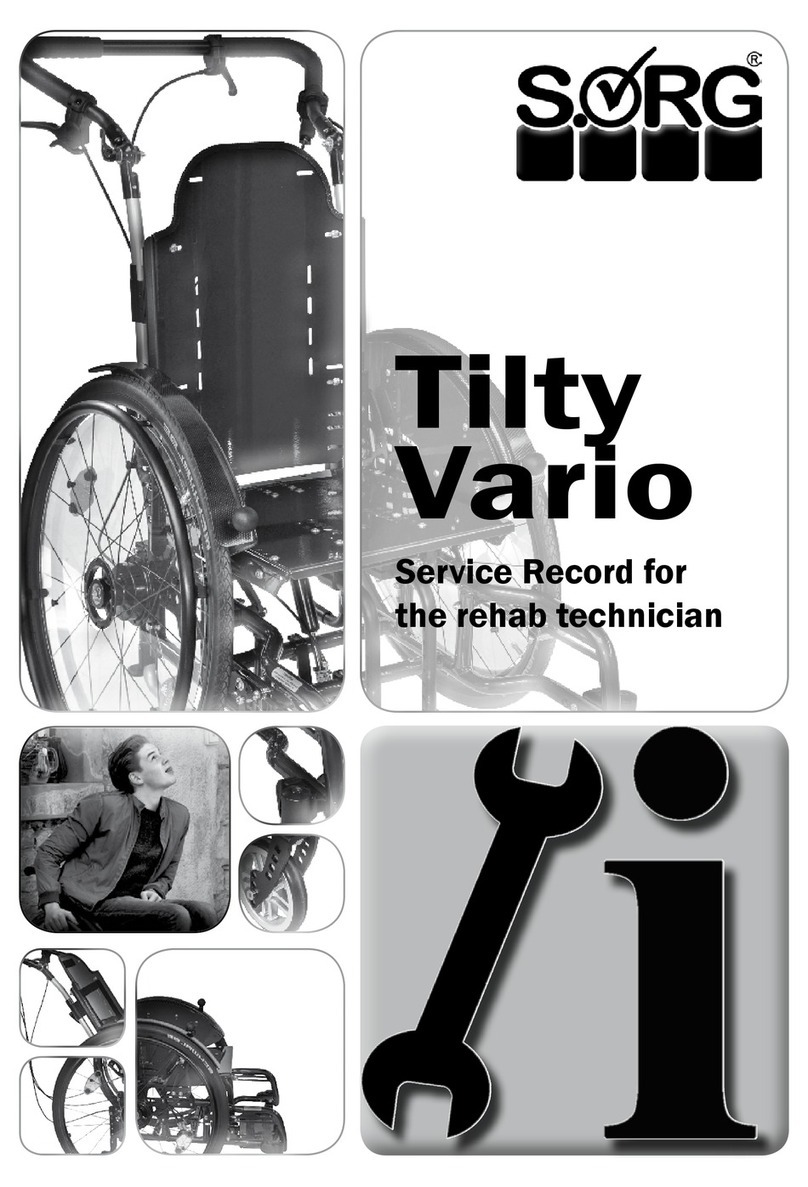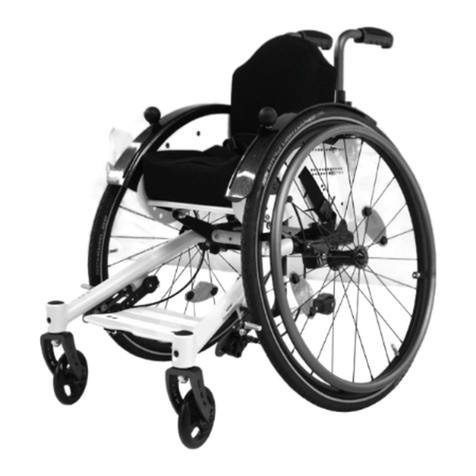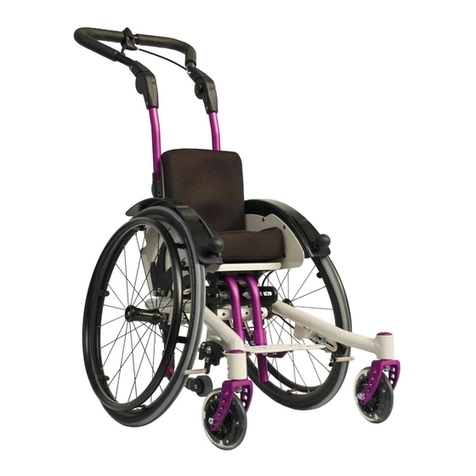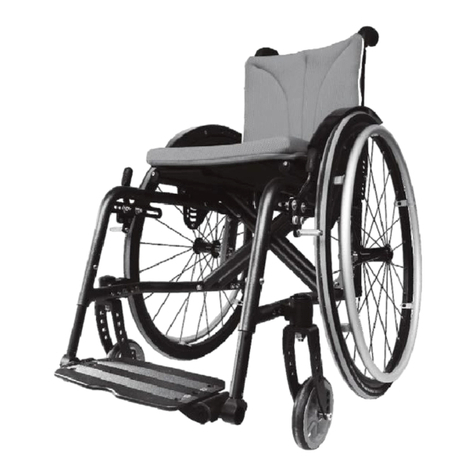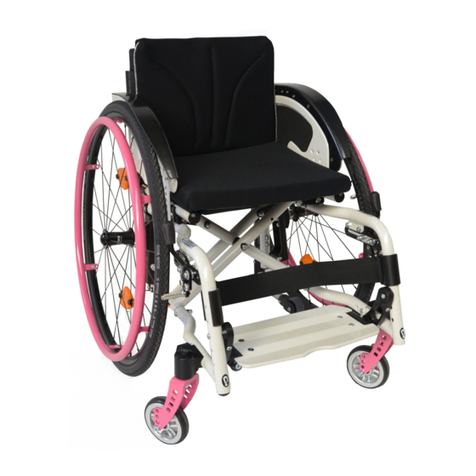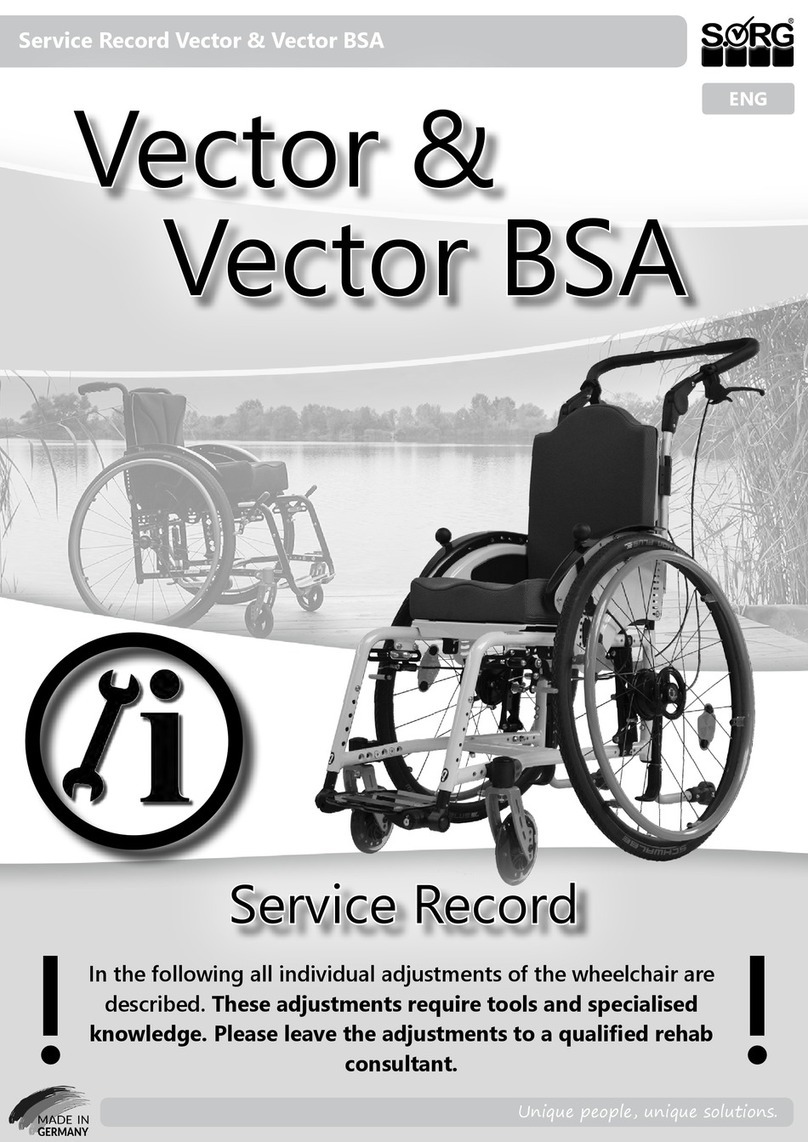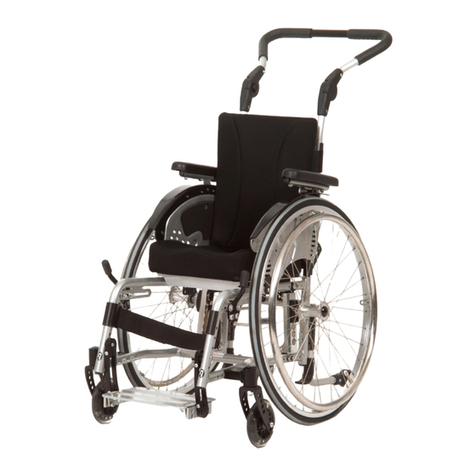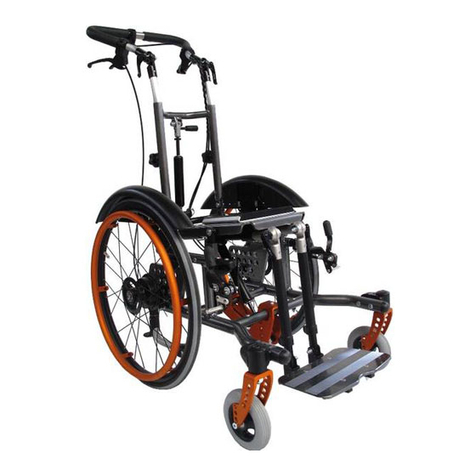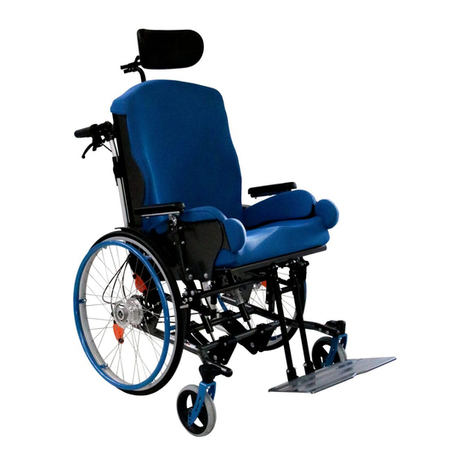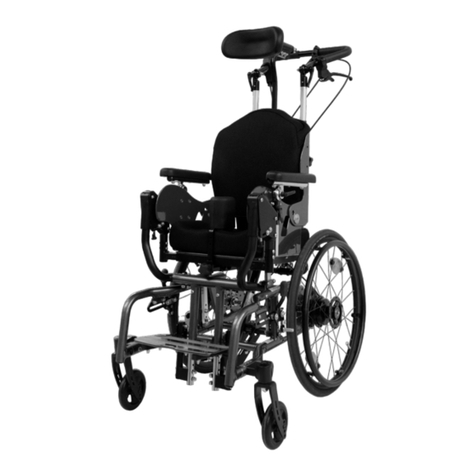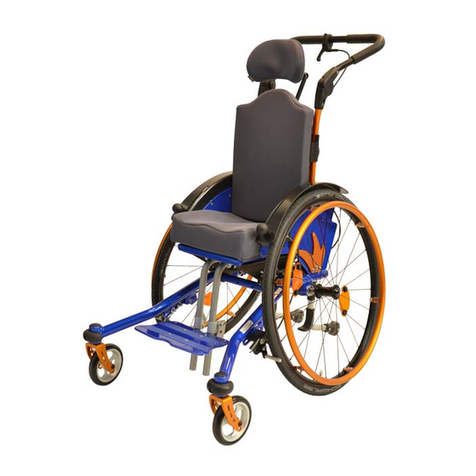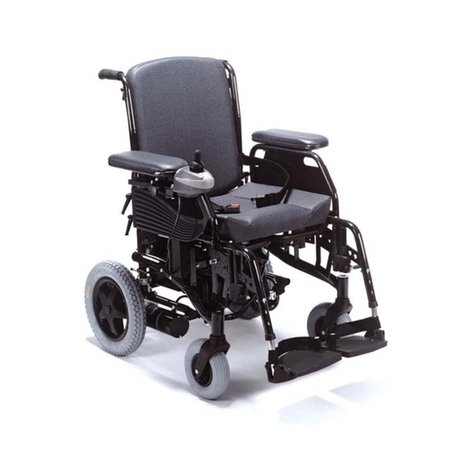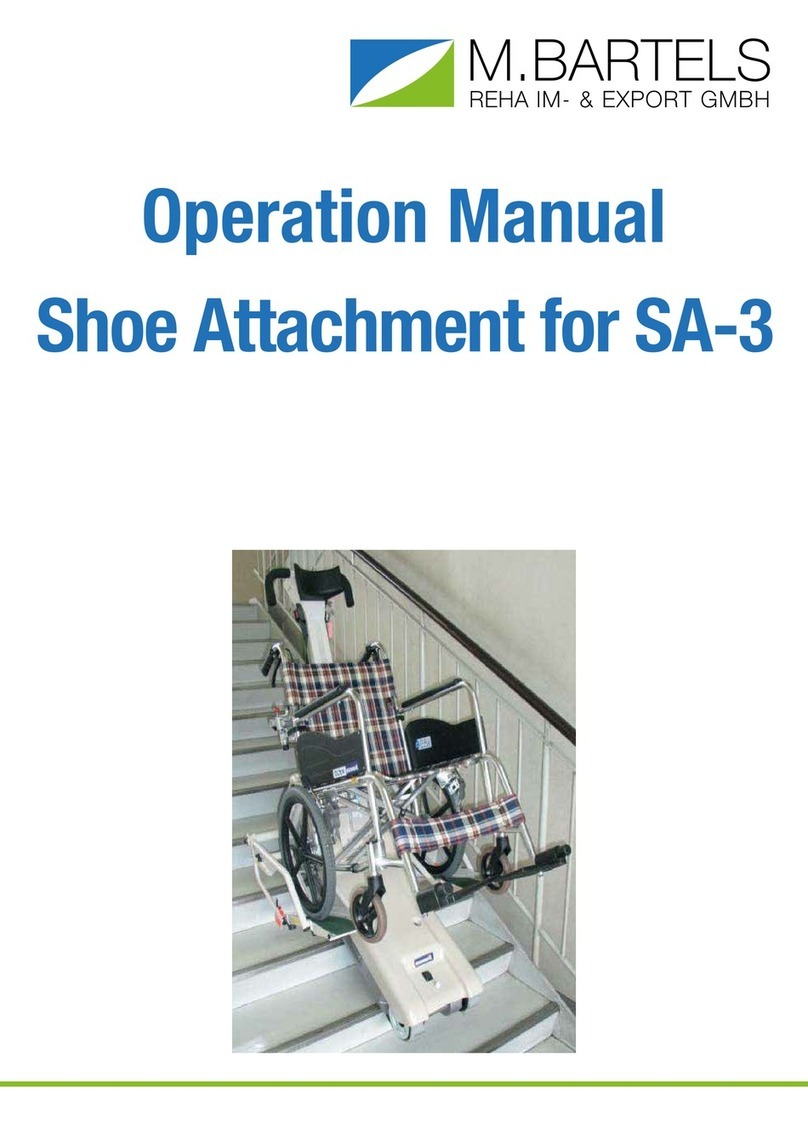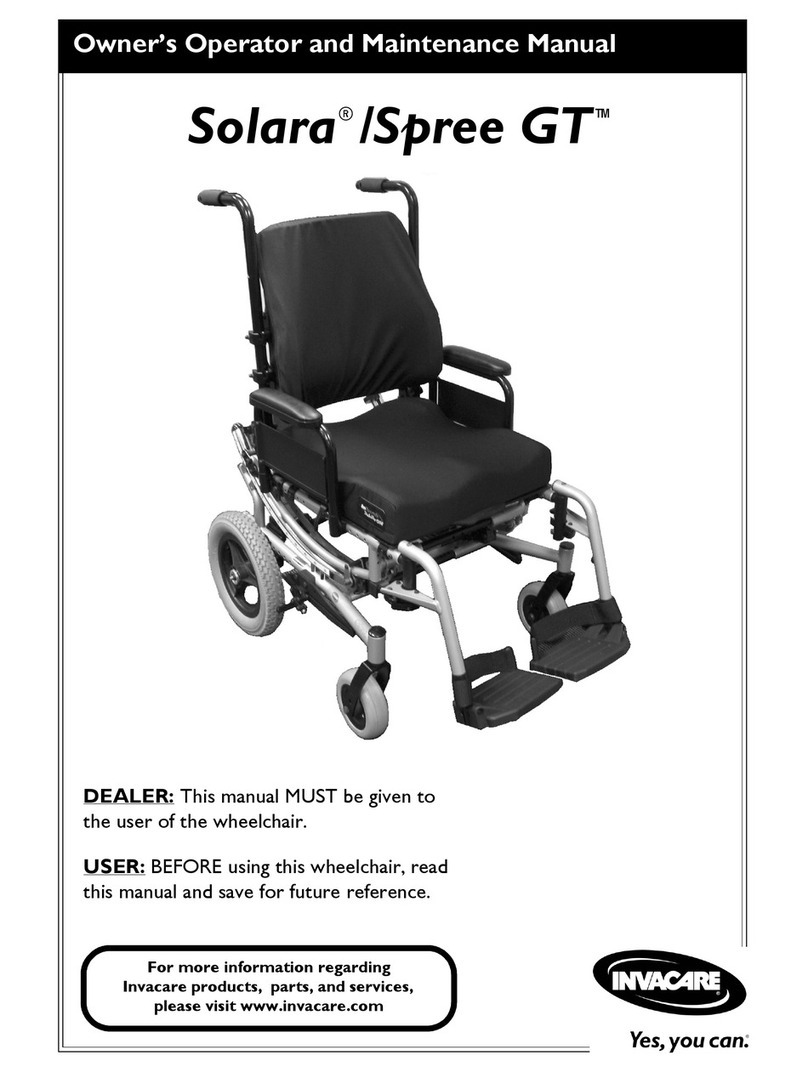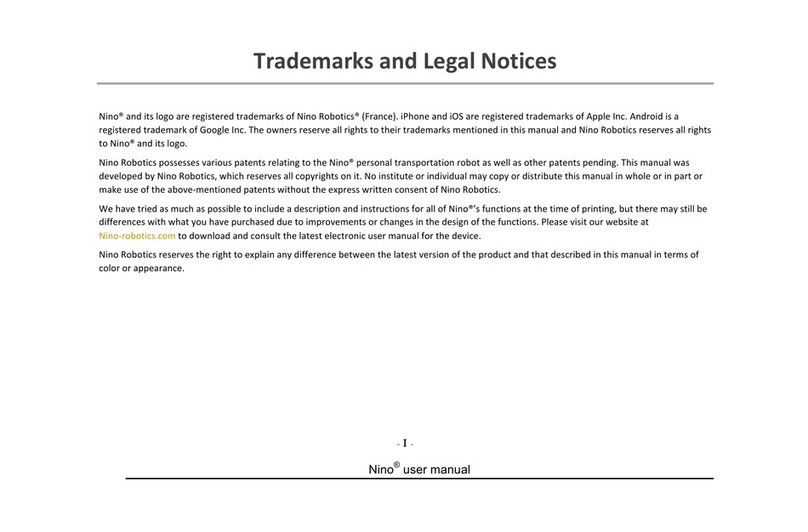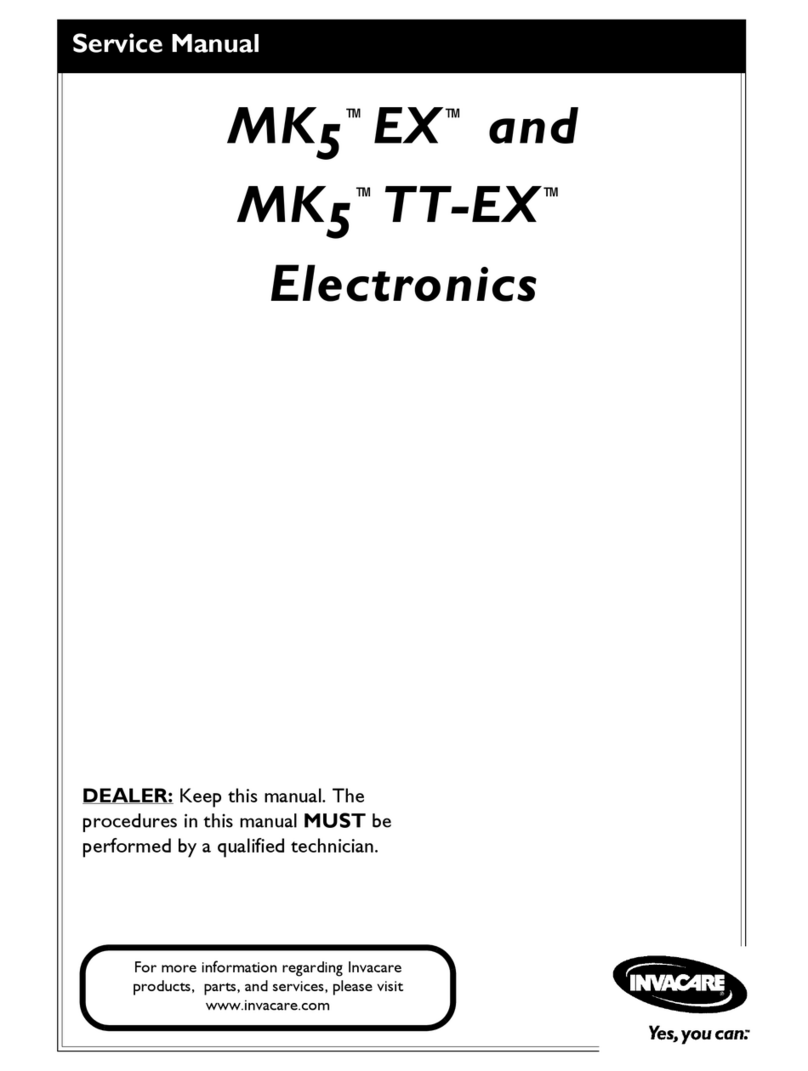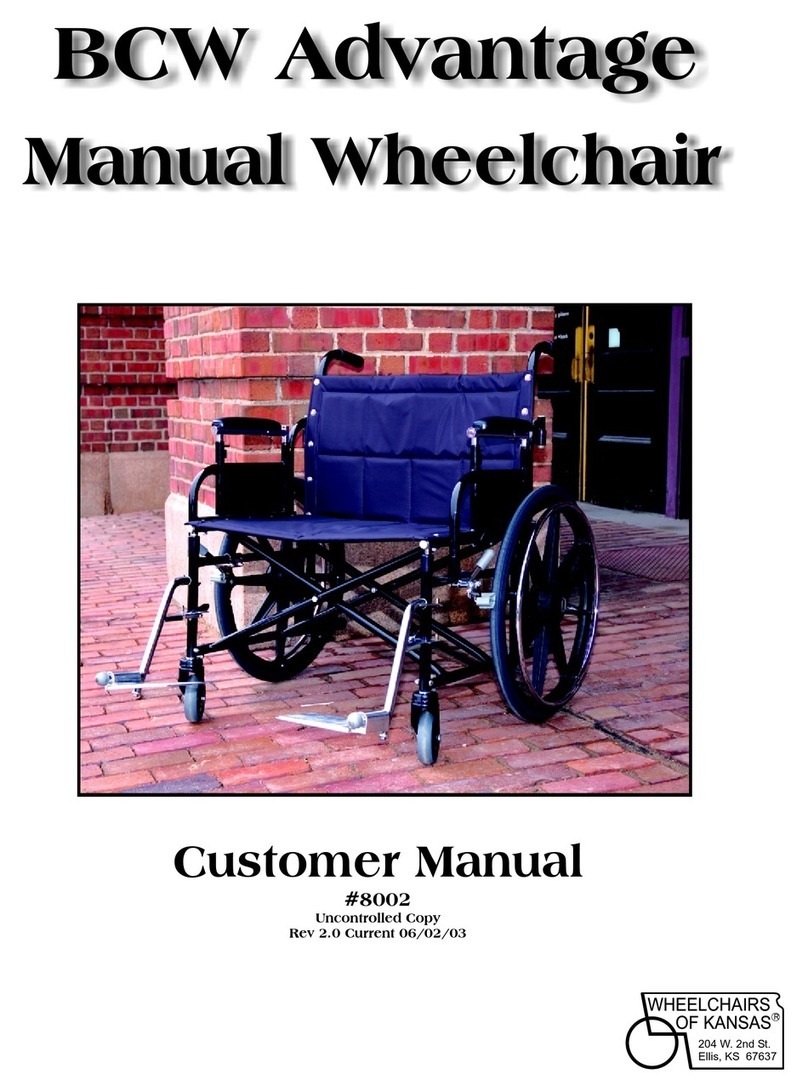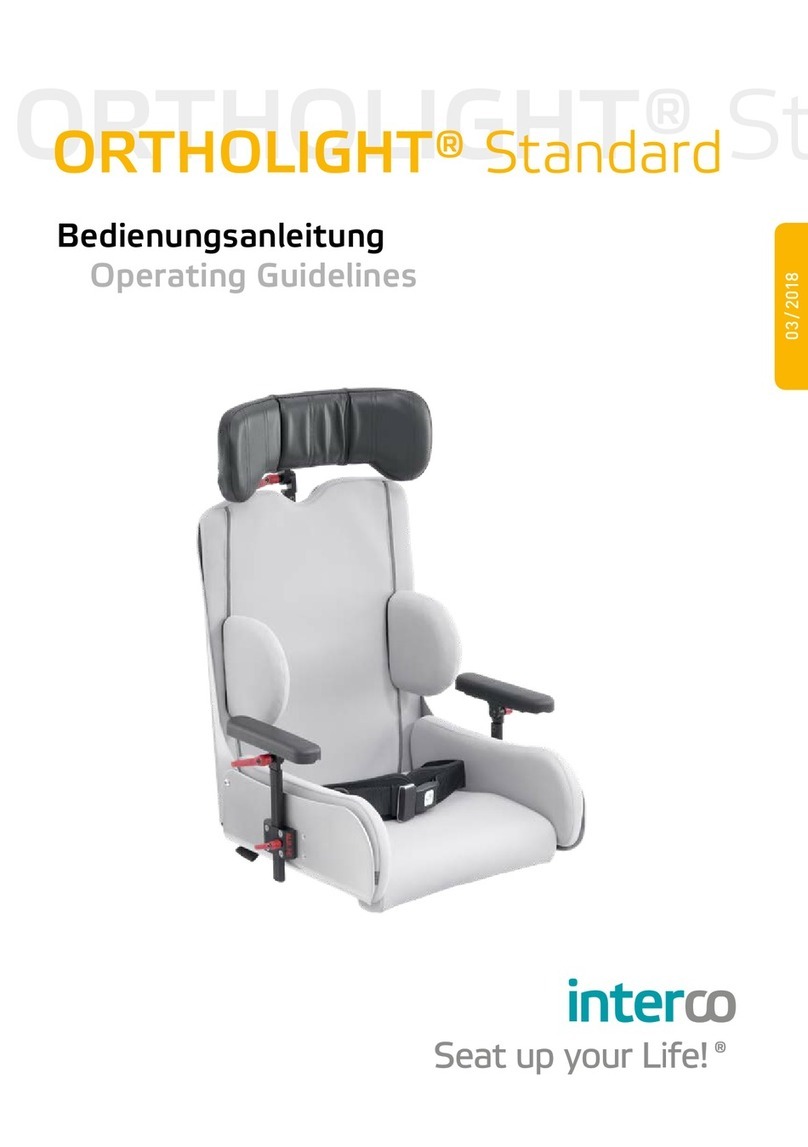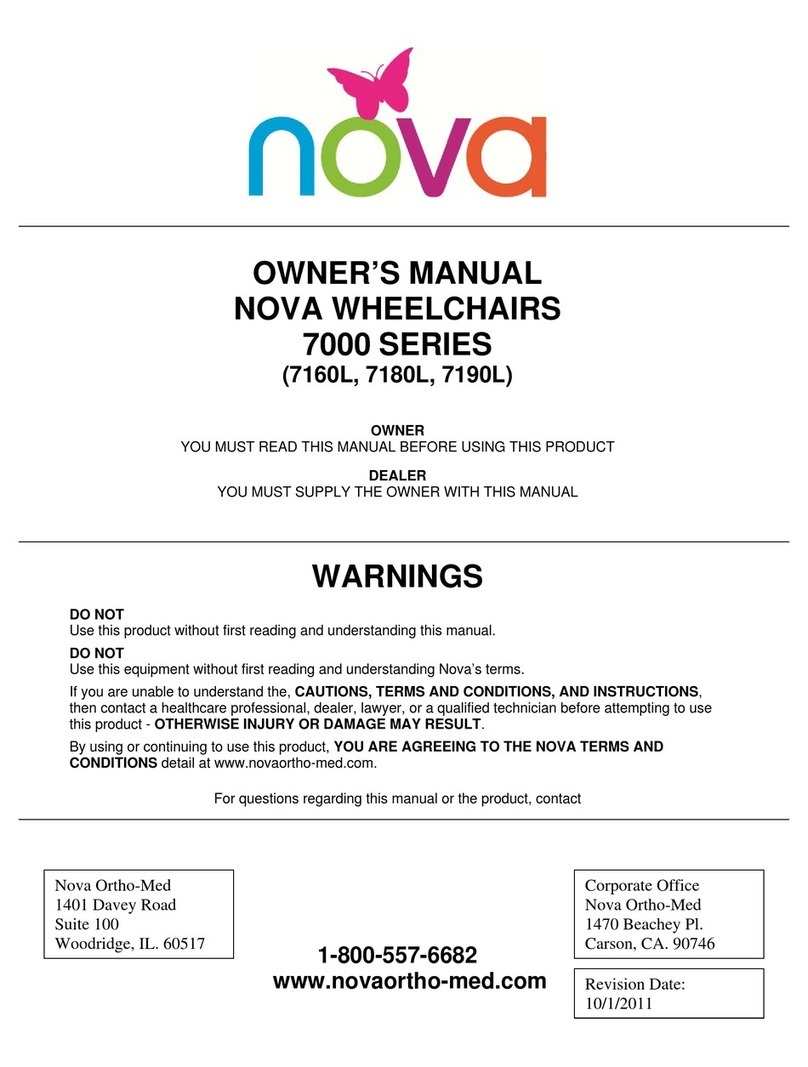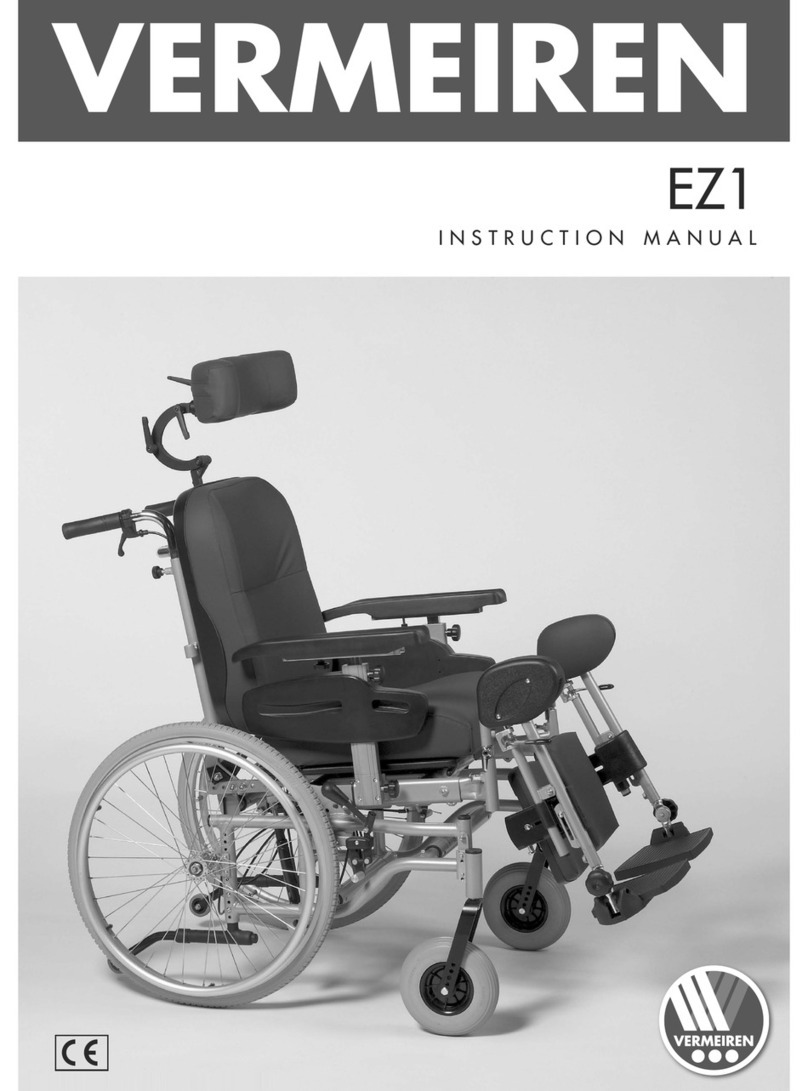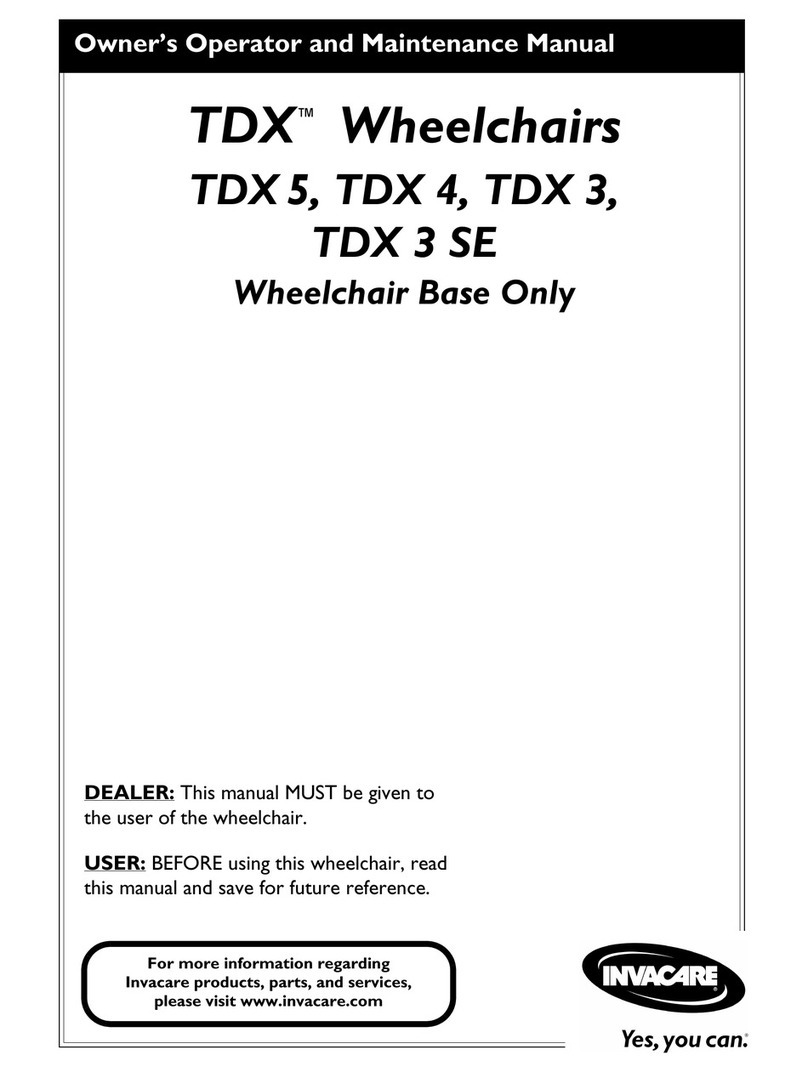User Manual Tilty vario Page 3 of 58
Table of Contents
1. General References ...........................4
1.1 Preamble............................................... 4
1.2 Reception .............................................. 4
1.3 Specifications ....................................... 5
1.4 Application ............................................ 6
1.5 Accessory and attachment drives ..... 6
2. Safety Instructions .............................7
2.1 General Security Advice ...................... 7
2.2 Before Every Use .................................. 7
2.3. How to Avoid Tipping .......................... 8
2.4 Coping with Obstacles ......................... 9
2.5 Heat & Water........................................ 9
2.6 Driving in Road Traffic......................... 9
3. Adjustments .....................................10
3.1 Leg Support Adjustments .................10
3.1.1 Undivided Leg Support.............. 10
3.1.2. Hinged Leg Support (optional). 11
3.1.3. Leg Support with Support Pad
(optional) ............................................. 13
3.2 Seat Heights........................................14
3.3 Centre of Gravity.................................15
3.4 Back Height.........................................16
3.5 Back Extension with Head Pad (optional)
.....................................................................17
3.6 Pelvic Belt (optional)..........................17
3.7 Back Angle ..........................................18
3.8 Side guard, clothing guard................19
3.9 Arm Pads (optional)...........................20
3.10 Adjustment of Caster and Rear Wheel
.....................................................................20
3.11 Locking brake...................................21
3.11.1 Standard Knee-lever Brake .... 21
3.11.2 Drum Brake (optional) ............ 22
3.12 Anti-tippers .......................................22
3.12.1 Anti-tipper (opt.) ...................... 23
3.13 Head Rest (optional) .......................24
3.14 Lateral Truss Pads (optional).........24
3.15 Abduction Wedge (optional) ..........24
3.16 Push Handles ...................................25
3.16.1 Extendable Push Handles (optional)
............................................................. 26
3.16.2 Push Bar (optional) ................. 27
3.16.3 Push Bar for up to 30 cm SW
(optional) ............................................. 27
3.17 Growth Adaption (opt.)....................28
3.17.1 Seat Depth Extension ............. 28
3.17.2. Seat Width Adjustment.......... 29
4 General Handling ..............................30
4.1 Getting in and out ..............................30
4.2 Push Handles......................................31
4.2 Push Handles......................................31
4.2.1 Push Bar (optional) ....................32
4.3 Tilt, Back Angle Adjustment and -
Extension ....................................................33
4.3.1 Tilt ...............................................33
4.3.2 Back Angle Adjustment..............34
4.3.3 Folding the Back to the Front....34
4.4 Anti-tipper ......................................35
4.5 Wheels with Quick-release-axles .....36
4.6 Leg Supports....................................... 37
4.6.1 Leg Support................................37
4.6.2 Leg Support, Hinged (optional) .37
4.7 Locking Brake.....................................38
4.7.1 Locking Brake, standard ...........38
4.7.2 Attendant Brake (optional)........38
4.7.3 Drum Brakes (optional) .............38
4.8 Loading and Transportation .............39
4.9 Safety of Transportation ...................39
4.10 Transportation of a wheelchair as
Seat in a Passenger Car........................... 40
5 Maintenance......................................41
5.1 Cleaning and Attendance .................41
5.2 Disinfection .........................................41
5.3 Inspection............................................ 42
5.4 Checklist and Maintenance.............. 43
5.5 Checklist Yearly Inspection ..............45
5.6 Reparations.........................................46
5.7 Service .................................................46
5.8 Replacement Parts............................ 46
5.9 Disposal ...............................................46
5.10 Reuse.................................................46
5.11 Tyre Change......................................47
6 Technical Data...................................48
6.1 Measures and Dimensions ...............48
6.2 Meaning of Labels.........................49
7 Warranty ............................................50
e.g. for constructional changes etc.8
Warranty Form......................................53
8 Warranty Form ..................................54
9 Life Cycle Record...............................55
9.1 User Chronology .................................55
9.2 Service Book ....................................... 56
Retailer Information.............................58
